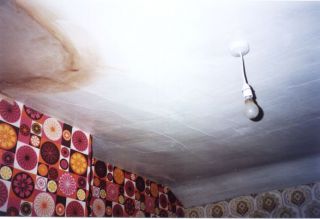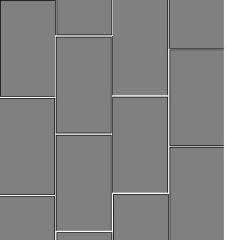Often if a ceiling is too badly damaged it will need plaster boarding over before it can either be Skimmed with plaster or Artexed. This ceiling below was very badly cracked but also was not flat as it curved off where it met the wall, the only solution here was to install a false ceiling by fixing a wooden partition across the ceiling (similar to building a partition wall).
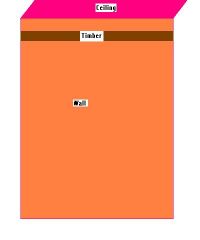
The stud work for the ceiling is relatively easy as you simply mark a line along one wall using a long piece of wood and spirit level at the height at which you want the false ceiling, fasten this piece of wood to the wall making sure it is level.
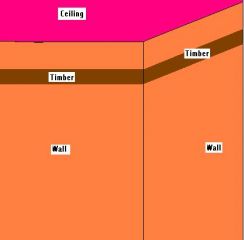
Then work around the room attaching the other lengths of wood until you have a level frame all around the room.

When all 4 walls have a level frame attached you can then install studs at 400mm centres for the plasterboard.
This procedure is almost identical to installing a stud partition but instead of being vertical it is horizontal, It is a good idea to leave a space for the loft hatch to make access easier. Skew Nail the studs to the framework around the room-
Installing a stud ceiling video
Cutting plasterboard is very easy and can either be sawn with an old blunt saw or better still score it on the reverse with a sharp knife all the way across, then press the sheet opposite to the score mark and it will break in half, now cut the paper on this side also and the plasterboard is cut perfectly. Cutting plasterboard
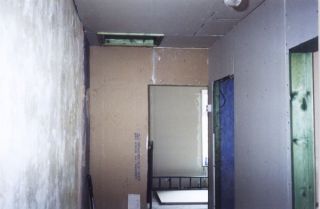
Fixing plasterboard to a ceiling is never easy and although it is possible to fix it alone it is far easier with two people. Be sure to mark the wall where the studs are to make fastening easier! You can now measure the sheets and fasten them, in most cases it is easiest to use nails as they are far faster but if vibration is going to cause problems you can screw them with bugle headed phosphate coated screws. When fastening the plasterboard ensure that the nails or screws do not tear the paper on the plasterboard, simply make sure they sink below the surface but without tearing the paper.
If you are plaster boarding over an existing ceiling it will be necessary to find the joists! In a upstairs room this is simple as you can simply pop into the attic and measure the joists, once you know the centres for the joists you can simply mark them on the walls before boarding. If you are to board a downstairs room you will either have to lift the floorboards above and measure the centres or prod the ceiling underneath with a suitable pointed tool until you find a joist, then move along until you find the next joist and measure the distance between the two, all the other joists should be spaced this same distance apart.
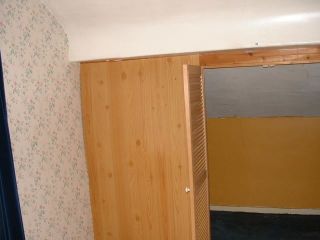
Plaster boarding an attic room is considerably more difficult as the ceilings are sloping, following the pitch of the roof outside, this causes 2 problems mainly that you have to use screws as nailing will cause vibration and secondly the sheets are extremely difficult to hold in place on a sloping surface!
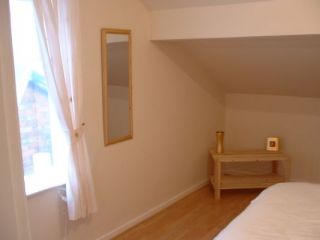
After removing the wood partition and wall paper I plaster boarded the ceilings of this room with the help of a friend and at one point I had two friends helping, you can see that the plaster is in poor condition. In one location there was a hole which led to the roofing felt so the only option was to board it out. As the room was so close to the roof I used 8 foot by 4 foot polystyrene backed 12.5mm sheets which are pretty difficult to manoeuvre. As well as screwing the sheets I also used some dry wall adhesive on the back as a precaution, this made positioning the sheets even more difficult as they slid down when positioned.
Once all the sheets were in place it was simply a matter of finishing the boards using finishing plaster.



